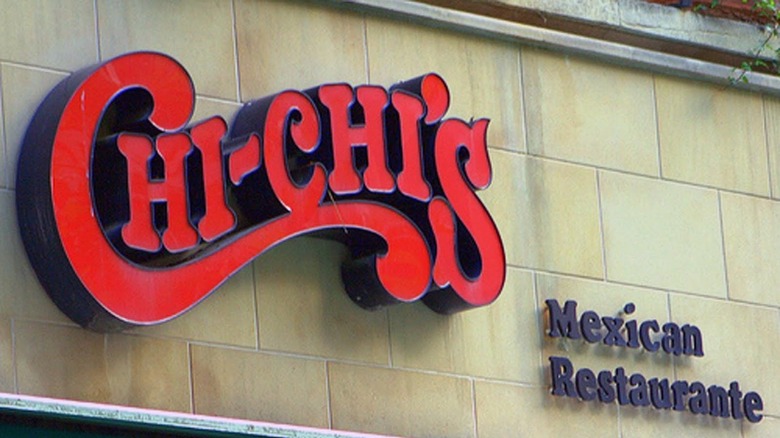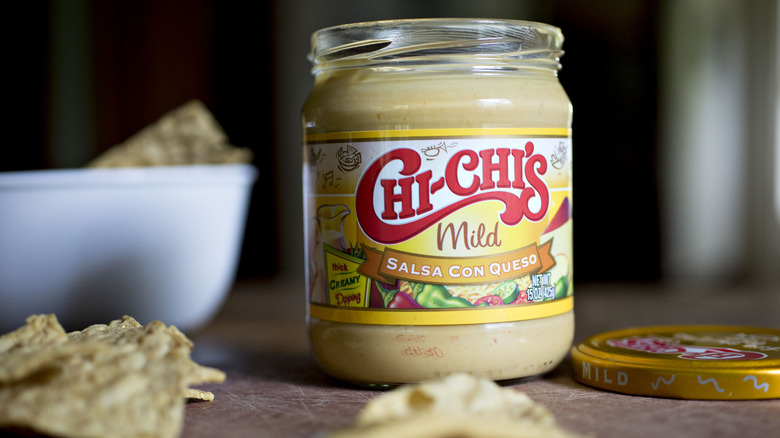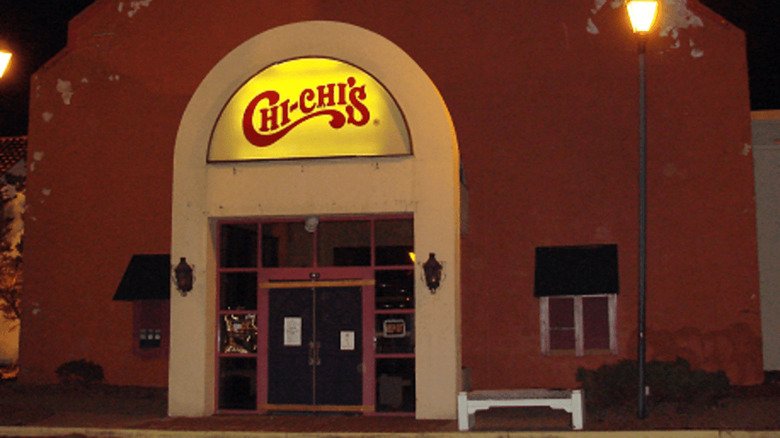The Disturbing Reason Chi-Chi's Shut Down For Good In 2003
To say that Chi-Chi's was a Mexican restaurant is a stretch of the imagination. It's hard to think of a business that better embodied the American appropriation of international cuisine than this once-prominent chain of casual dining establishments. This fact was evident in Chi-Chi's marketing, says Reference for Business. "At Chi-Chi's, Salsafication is more than a word. It's an attitude. It's a spirit. It's a way of life." This statement was emblematic of their dining experience, although it downplays the fact that Chi-Chi's was the only place on the face of the Earth where 'Salsafication' was a word, to begin with.
After all, who would expect an authentic Mexican experience from a restaurant launched in Minneapolis by a pair of fellows named Marno McDermott and Max McGee? With this dubious background, you might expect Chi-Chi's to be a flop right out of the gates, but it actually became a multi-million dollar franchise at its height. However, you won't find a single location in the U.S. today, and Chi-Chi's downfall is a story of literal life and death.
The rise and fall of Salsafication
McDermott and McGee founded Chi-Chi's in 1975, and it was an instant success. The men had wisely capitalized on a lack of Mexican restaurants in the Midwest, and Reference for Business notes that their first-year sales amounted to $2 million. Chi-Chi's was so successful that a stockbroker asked McDermott to sell him the rights to franchise more locations, later bringing in Shelly Frank, a former executive at KFC, to be the company's new president, per Reference for Business. Under Frank's leadership, Chi-Chi's rapidly expanded, and by 1986, they had 200 locations.
The tides began to turn in the late '80s, as it became apparent that Chi-Chi's had expanded too rapidly for its own good. Reference for Business notes that they built massive restaurants, totaling as much as 12,000 square feet, which were too big to operate profitably. They also made the mistake of trying to expand to states like Texas, New Mexico, and California, where the demand for Mexican food was already being satisfied. The franchises also suffered from high rates of management turnover. Things got so bad in 2002, that the company filed for Chapter 11 bankruptcy, and yet, the worst was still to come.
A deadly outbreak was the nail in Chi-Chi's coffin
Within a year of filing for bankruptcy, Chi-Chi's landed in the national spotlight for the worst reason imaginable. In the autumn of 2003, a Chi-Chi's location in Beaver, Pennsylvania, 25 miles from Pittsburgh, was the center of a deadly hepatitis outbreak. The Associated Press reported that at least 575 people had contracted hepatitis A after dining at the restaurant. The virus was traced to green onions used in Chi-Chi's salsa, but by then it had already become the biggest hepatitis A outbreak in American history. At the time of the AP report, three people had died from the virus, but The Takeout reveals that the death toll was ultimately four, while the number of cases grew to exceed 600.
For a company that had already been struggling, there was no way Chi-Chi's could recover its reputation after inadvertently killing customers. In 2004, USA Today reported that Outback Steakhouse had bought out the company and planned to convert Chi-Chi's restaurant locations into their own brands, which, in addition to Outback, included Fleming's, Roy's, and Cheeseburger in Paradise. Chi-Chi's isn't entirely gone though. The Takeout reports that a few locations in Europe survived the chain's early-2000's catastrophes. Furthermore, Hormel purchased the rights to sell select Chi-Chi's products, including salsa and dips, in grocery stores, which it still does today.


